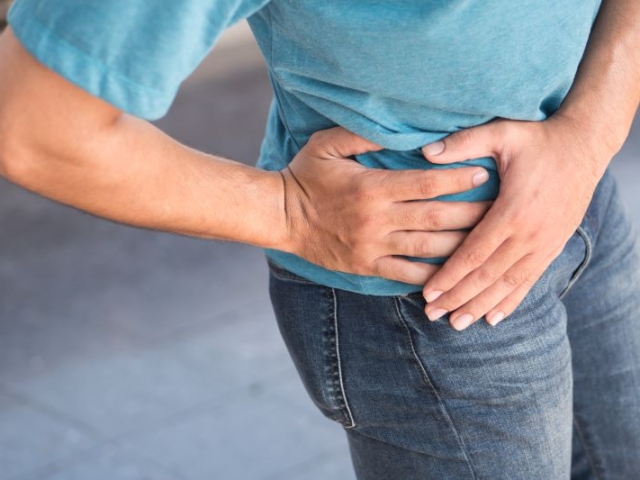
Pelvic Pain in Transgender Individuals on Testosterone

Introduction
Transgender individuals have a gender identity that differs from their assigned sex at birth. Many transgender individuals are interested in therapies that may help them externally align their physical traits with their internal gender, such as testosterone therapy.
Testosterone therapy is a common medical intervention, particularly for those assigned female at birth who wish to develop more stereotypically “masculine” characteristics. The hormone testosterone promotes the development of physical characteristics such as facial hair and a deepened voice. By administering exogenous testosterone, over time, one’s secondary sexual characteristics may better align with their gender identity. This can be very helpful for some individuals who are dealing with gender dysphoria when it comes to improving their overall well-being.
Some transgender individuals taking testosterone have reported experiencing pelvic pain. A new study explored pelvic pain in transgender individuals undergoing testosterone therapy with both a uterus and ovaries. While pelvic pain affects 14%-32% of this population, the impact of testosterone on pelvic pain is poorly understood. Therefore, the study aimed to identify the prevalence of pelvic pain in transgender people taking testosterone as well as the potential risk factors. The authors hypothesized that this is a common occurrence and there may be documentation of prior pelvic pain in these individuals.Top of Form
Methods
This was a retrospective study, approved by an institutional review board, that examined transmasculine patients undergoing testosterone therapy at a tertiary care center from 2002 to 2021. Participants met criteria including having a gender dysphoria diagnosis, a testosterone prescription for over a year, and a uterus and ovaries when therapy was initiated.
The participants’ electronic medical records were analyzed for documentation of pelvic pain, testosterone use details, patient characteristics, and comorbidities. Statistical analyses assessed the risk of experiencing pelvic pain while on testosterone, comparing demographics and procedural history.
Results
Among 280 transmasculine individuals on testosterone for over a year, 36% experienced pelvic pain. Of these, 71% had not had pelvic pain before starting testosterone. The median age at testosterone initiation was 22 years, with a treatment duration of 48 months.
Patient characteristics did not significantly differ between those with and without pelvic pain. However, those experiencing pain were more likely to have had pelvic pain before starting testosterone, painful menstrual periods, ovarian cysts, and breakthrough bleeding. Hysterectomy rates were higher in individuals with pelvic pain. Serum testosterone levels were slightly lower in those with pain. Nevertheless, there were no significant differences in the ultrasound findings between the two groups.
Discussion & Conclusion
This study revealed a 36% prevalence of pelvic pain in transmasculine individuals with a uterus and ovaries on testosterone for over a year. Interestingly, most experiencing pain had not reported it before starting testosterone, though those who experienced pain while taking testosterone were more likely to report experiencing it beforehand than those who did not.
Painful menstrual periods, ovarian cysts, and endometriosis were more common in those with pelvic pain, suggesting multifactorial causes. Breakthrough bleeding and lower testosterone levels were also associated with pelvic pain, indicating that incomplete hormonal suppression may contribute. The study noted a higher prevalence of hysterectomy in those with pelvic pain. In the end, these findings emphasize the complexity of pelvic pain in transgender individuals on testosterone demonstrate the need for further research to optimize care.
References:
- Grimstad, F. W., Boskey, E. R., Clark, R. S., & Ferrando, C. A. (2023). Prevalence of Pelvic Pain in Transgender Individuals on Testosterone. The Journal of Sexual Medicine, 20(12), 1459–1465. https://doi.org/10.1093/jsxmed/qdad135

